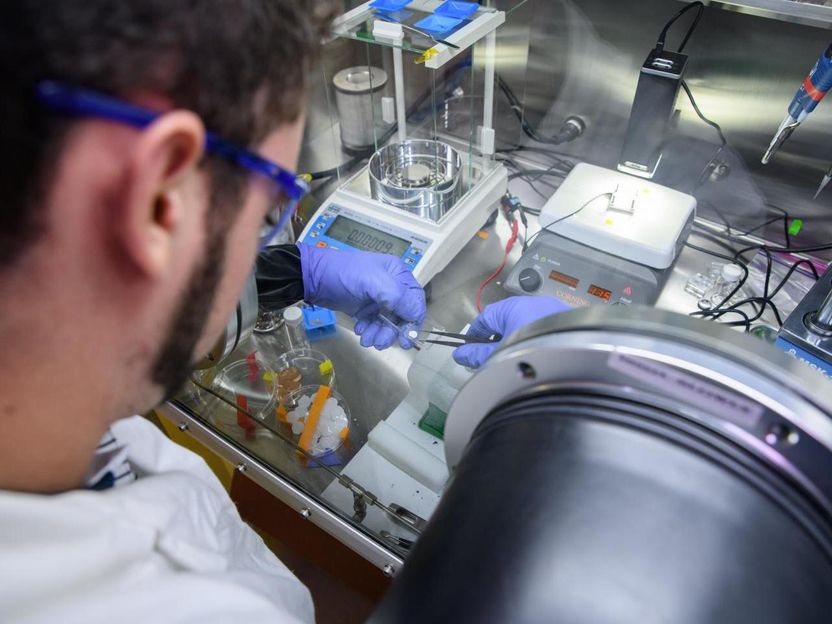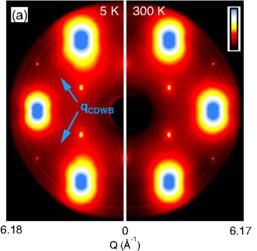X-ray imaging provides clues to fracture in solid-state batteries
Advertisement
Solid-state batteries - a new battery design that uses all solid components - have gained attention in recent years because of their potential to hold much more energy while simultaneously avoiding the safety challenges of their liquid-based counterparts.

Thomas Marchese, a student at Georgia Tech, assembles a battery.
Rob Felt
But building a long-lasting solid-state battery is easier said than done. Now, researchers at the Georgia Institute of Technology have used X-ray computed tomography (CT) to visualize in real time how cracks form near the edges of the interfaces between materials in the batteries. The findings could help researchers find ways to improve the energy storage devices.
"Solid-state batteries could be safer than lithium-ion batteries and potentially hold more energy, which would be ideal for electric vehicles and even electric aircraft," said Matthew McDowell, an assistant professor in the George W. Woodruff School of Mechanical Engineering and the School of Materials Science and Engineering. "Technologically, it's a very fast moving field, and there are a lot of companies interested in this."
In a typical lithium-ion battery, energy is released during the transfer of lithium ions between two electrodes - a cathode and an anode - through a liquid electrolyte.
For the study, which was published in the journal ACS Energy Letters and was sponsored by the National Science Foundation, the research team built a solid-state battery in which a solid ceramic disc was sandwiched between two pieces of solid lithium. The ceramic disc replaced the typical liquid electrolyte.
"Figuring out how to make these solid pieces fit together and behave well over long periods of time is the challenge," McDowell said. "We're working on how to engineer these interfaces between these solid pieces to make them last as long as possible."
In collaboration with Christopher Saldana, an assistant professor in the George W. Woodruff School of Mechanical Engineering at Georgia Tech and an expert in X-ray imaging, the researchers placed the battery under an X-ray microscope and charged and discharged it, looking for physical changes indicative of degradation. Slowly over the course of several days, a web-like pattern of cracks formed throughout the disc.
Those cracks are the problem and occur alongside the growth of an interphase layer between the lithium metal and solid electrolyte. The researchers found that this fracture during cycling causes resistance to the flow of ions.
"These are unwanted chemical reactions that occur at the interfaces," McDowell said. "People have generally assumed that these chemical reactions are the cause the degradation of the cell. But what we learned by doing this imaging is that in this particular material, it's not the chemical reactions themselves that are bad - they don't affect the performance of the battery. What's bad is that the cell fractures, and that destroys the performance of the cell."
Solving the fracturing problem could be one of the first steps to unlocking the potential of solid state batteries, including their high energy density. The deterioration observed is likely to affect other types of solid-state batteries, the researchers noted, so the findings could lead to the design of more durable interfaces.
"In normal lithium-ion batteries, the materials we use define how much energy we can store," McDowell said. "Pure lithium can hold the most, but it doesn't work well with liquid electrolyte. But if you could use solid lithium with a solid electrolyte, that would be the holy grail of energy density."
Original publication
Other news from the department science
Most read news
More news from our other portals
See the theme worlds for related content
Topic World Battery Technology
The topic world Battery Technology combines relevant knowledge in a unique way. Here you will find everything about suppliers and their products, webinars, white papers, catalogs and brochures.

Topic World Battery Technology
The topic world Battery Technology combines relevant knowledge in a unique way. Here you will find everything about suppliers and their products, webinars, white papers, catalogs and brochures.



































































